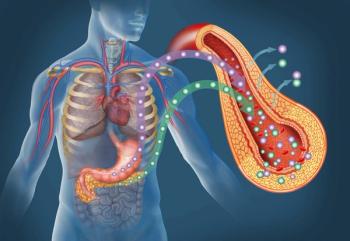
Detecting Pancreatic Cancer with a Blood Test
Micro RNA based blood test may be used with imaging features to accurately predict disease severity.
Micro RNA based blood test may be used with imaging features to accurately predict disease severity.
Though it is still in development, a blood test may be able to detect pancreatic cancer in early stages, according to a proof of concept study published in Cancer Prevention Research.
Researchers from the H. Lee Moffitt Cancer Center & Research Institute worked to develop a blood test that would identify patients with pancreatic lesions called intraductal papillary mucinous neoplasms (IPMNs) before they become malignant. The researchers designed the test to work toward early detection of pancreatic cancer, which they believed was a key factor to the cancer’s low survival rate. The study authors said that pancreatic cancer is the fourth most common cause of cancer related deaths. The cancer has a 5-year survival rate of only 6%, they added.
“One promising strategy to reduce the number of people affected by pancreatic cancer is to identify and treat premalignant pancreatic lesions,” first author Jennifer Permuth-Wey, PhD, MS, assistant member in the Departments of Cancer Epidemiology and Gastrointestinal Oncology at Moffitt, explained in a press release. “IPMNs are established precursor lesions to pancreatic cancer that account for approximately half of all asymptomatic pancreatic cysts incidentally detected by computerized tomography scans or magnetic resonance imaging (MRI) in the US each year.”
Typically, IPMNs are classified into either low or high-risk categories for the development of pancreatic cancers, but the only way to determine the severity of the lesions is to surgically remove them for analyzing.
Surgery can be risky in itself, the statement continued, leaving few options for researchers. Plus, on the other hand, taking no action (i.e., not removing the lesions) may not prevent the lesions from developing into pancreatic cancer.
The researchers believe they will soon be able to monitor high risk IPMNs through studying micro RNAs, which provide insight into development of cancers. By comparing the expression of micro RNA patterns, the researchers learned that there are about 30 micro RNAs that differed in IPMNs and healthy patients. An additional five micro RNAs were found that would vary between low and high risk IPMNs.
“The hope is that in the not-so-distant future a micro RNA based blood test can be used in conjunction with imaging features and other factors to aid the medical team in accurately predicting disease severity of IPMNs and other pancreatic cysts at the time of diagnosis or follow up so that more informed personalized medical management decisions can be made," concluded Permuth-Wey.
Newsletter
Stay informed on drug updates, treatment guidelines, and pharmacy practice trends—subscribe to Pharmacy Times for weekly clinical insights.














































































































































































































